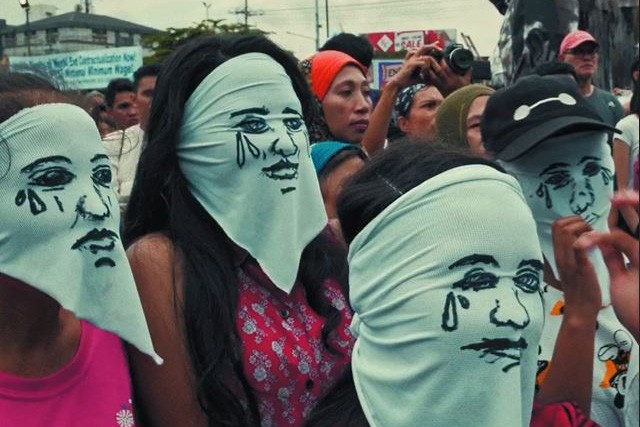Philippine folklore is filled with mythical and mysterious beings, including scary monsters like the “Aswang” that gave us many sleepless nights when we were kids.
The “Aswang” is the Philippines’ most famous carnivorous monster, a boogeyman-like predatory figure in local folklore that preys on humans.
“Aswang” is a collective term for an entire family of vampiric and malevolent spirits that suck blood, eat human flesh, and shape-shift as feral dogs, wild pigs, bats, or crow-like birds when hunting.
The witch, the were-beast, the bloodsucker, the corpse-eater, as well as the flying torsos (“manananggal”) or winged monster that sucks unborn children out of pregnant women, are some of the types of “Aswang” in Philippine folklore.
The “Aswang” appeared in the international anime series “Trese” in Netflix, which fuses Philippine folklore, legends, and horror mythology with dark, graphic storytelling.
It follows Alexandra Trese, a mysterious detective who deals with crimes of supernatural origin.
Ghouls as “Aswang” organized gangs as underworld denizens of Manila, purveyors of nightclubs and criminal gangs involved in gun smuggling.
The city’s mayor was seen making deals with the “Aswang” in exchange for power — trafficking slum dwellers as wet market for illegal human meat.

In the documentary film “Aswang,” the ferocious vampiric, shape-shifting monster metamorphoses into the perpetrators of the “war on drugs” and their abilities to stir palpable fear among their prey.
The film directed by Alyx Ayn Arumpac used the “Aswang” not just as a folkloric monster but as a creation for fear-mongering that simulates its character — disguised and clandestine in food-hunting, prioritizing the poor at the bottom of the food chain.
“Aswang” follows a group of people entangled in being witnesses to the struggles of victims of extrajudicial killings and exposing how their lives have changed during the current administration’s campaign against illegal drugs.
As known and suspected drug users are gunned down with alarming regularity, the film paints a grim but compassionate picture of present-day life in Manila’s exceedingly mean streets when losing their loved ones becomes an everyday occurrence for the poor.
The film touched upon “financial justice” wherein a person’s social standing determines whether they end up dead on a sidewalk, and how the poor become easy targets because they do not have the means to pay for the cost of justice — a cruel reality that many victims continue to face.

In the case of People vs Bacalto (G.R. Nos. 116307-10 August 14, 1997), the Supreme Court said that superstition is merely an outward manifestation of an inner fear for folkloric monsters like the “Aswang.”
Finished with their field chores in Isulan, Sultan Kudarat, farmers were on their way back home when they were accosted by several men who shot them at close range, saying they would be killed because they were “Aswang.”
The hapless victims were gunned down, cold-bloodedly and ruthlessly while pleading that they be not shot because they were not “Aswang.”
When the killers began discharging their firearms at their victims, the latter were in no position whatever to put up any defense or offer any resistance to the assault. The victims had no weapons.
Three were killed while one survived although seriously wounded. The perpetrators were convicted of murder and frustrated murder.
The Court noted that this as an example of how fear can lead to murder as no other motive for the crimes charged having been clearly shown.
In People vs Sario (G.R. Nos. L-20754 and L-20759 June 30, 1966), the offender was charged with oral defamation or slander after calling the complainant an “Aswang.”
The offender said the complainant inherited her power of witchcraft from her father and that she had probably bequeathed it to her child, who had become thinner as a consequence.
“Aswang” is defined, the Court said, as “an injurious and evil character believed to be capable of assuming various and different forms, especially that of a dog, and harassing usually in the depth of night women who are about to give birth.”
The Court stressed the term “Aswang” is an offensive, malicious and derogatory imputation, as it charges the complainant with having taught her child evil practices — and act which is immoral and highly reprehensible.
The offender also used the word “mangkukulam,” which the Court considered as undoubtedly an epithet of opprobrium.
To say that the complainant is a witch and a sorceress is to impute to her a vice, condition or status that is dishonorable and contemptible because it accuses her of having employed the black art, of possessing super-natural power by reason of a covenant with evil spirits, and of having trafficked with the devil.
Beware of the “Aswang.”
Lawyer Dennis R. Gorecho heads the seafarers’ division of the Sapalo Velez Bundang Bulilan law offices. For comments, email [email protected], or call 09175025808 or 09088665786









